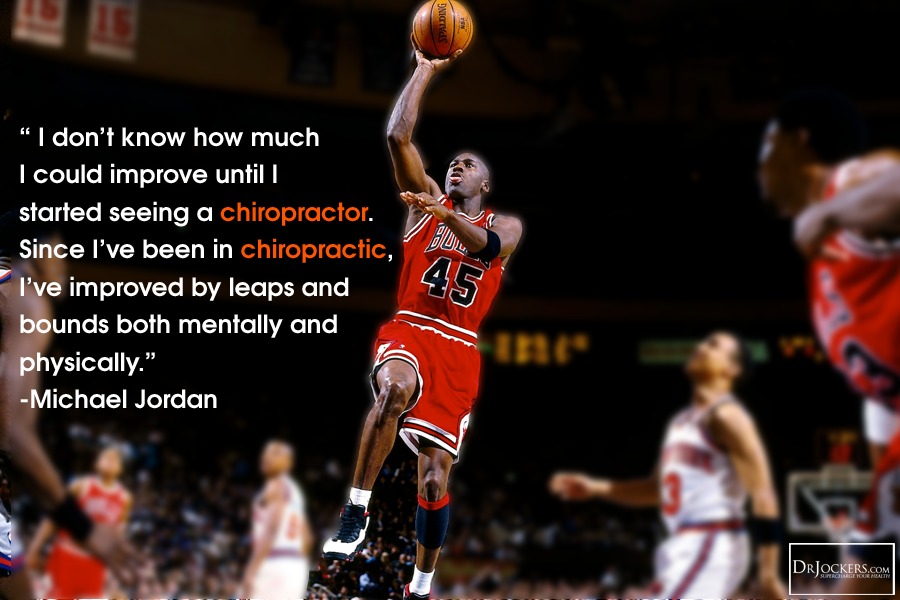Amazingly, God created the body with an incredible system of self-healing that withstands the onslaught and rebuilds what has been damaged. Chiropractic care has been shown to be a powerful method of stabilizing and enhancing this self-healing ability.
The central nervous system is the primary system that controls all function and healing within the body. This flow of nerve energy from the brain to the body coordinates all 75 trillion cells to action. The brain is then fed through movement information that it receives from skin, joint, & muscle receptors. This movement information is called "proprioception." The brain depends on adequate proprioception for optimal function (2, 3, 4).
Physical Nerve Stress Destroys Our Body
Physical nerve stress occurs when the spinal bones are twisted or thrown out of alignment. This is caused everyday by macro traumas such as falls, car accidents, & sporting activities. Micro traumas such as bad posture, repetitive movements, and poor sleeping habits can damage the spine & nervous system as well.
Physical nerve stress causes a deficiency in healthy brain-body signaling and an increased release of the stress hormone cortisol. This disrupts the body's ability to heal (5, 6). Chiropractic adjustments remove this built-up pressure on the nervous system allowing the body to heal as it was designed. Many studies have shown chiropractic care to be a powerful form of anti-aging (7, 8, 9).
Oxidative Stress Damages the Cell
In 2005, a landmark study published in the Journal of Vertebral Subluxation (JVSR) found evidence that chiropractic care can reduce oxidative stress in the body (10). Oxidative stress is the damage that occurs when free radicals outnumber the body's antioxidants.
Oxidative stress damages all body cell components: proteins, lipids and DNA. In fact, researchers have found that one out of every three proteins is rendered dysfunctional by unchecked free radical damage (11). Thiols are sulfur containing compounds in the body that act as antioxidants They react with free radicals to neutralize them.
Serum levels of thiols reflect DNA's capacity to repair itself, report scientists of Biomedical Diagnostic Research, Inc, and can be used to measure aging and disease status. In a 2003 study published in the Journal of Anti Aging Medicine, low serum thiol levels were fund in nine different categories of human sickness and disease. (12)
Chiropractic Boosts Anti-Oxidants
The study published in JVSR consisted of 76 participants: one group received short-term chiropractic care; a second group received long-term chiropractic care; and the third group received no chiropractic care. The study qualified participants for age, sex and the use of nutritional supplements.
Healthy individuals that received chiropractic care for 2 or more years had higher serum thiol levels than those with disease. Some of the chiropractic patients had serum thiol levels higher than what is associated with normal wellness.
Chiropractor Dr. Christopher Kent explained:
"Oxidative stress, metabolically generating free radicals, is now a broadly accepted theory of how we age and develop disease.""Going through life," he adds, "we experience physical, chemical and emotional stress. These stresses affect the function of the nervous system. We hypothesized that these disturbances in nerve function could affect oxidative stress and DNA repair on a cellular level."
"Chiropractic care appears to improve the ability of the body to adapt to stress." concluded Kent.
Sources
- Lobo V, Patil A, Phatak A, Chandra N. Free radicals, antioxidants and functional foods: Impact on human health. Pharmacognosy Reviews. 2010;4(8):118-126.
- Riemann BL, Lephart SM. The Sensorimotor System, Part II: The Role of Proprioception in Motor Control and Functional Joint Stability. Journal of Athletic Training. 2002;37(1):80-84.
- Proprioceptive sensibility in the elderly: Degeneration, functional consequences and plastic-adaptive processes Link Here
- Paradoxical functional facilitation in brain-behaviour researchA critical review Link Here
- Owens EF. Chiropractic subluxation assessment: what the research tells us. The Journal of the Canadian Chiropractic Association. 2002;46(4):215-220.
- Models of Vertebral Subluxation:A Review Link Here
- Teodorczyk-Injeyan JA, Injeyan HS, Ruegg R. Spinal manipulative therapy reduces inflammatory cytokines but not substance P production in normal subjects. J Manipulative Physiol Ther. 2006 Jan;29(1):14-21. PMID: 16396725
- Teodorczyk-Injeyan JA, Injeyan HS, Ruegg R. Spinal manipulative therapy reduces inflammatory cytokines but not substance P production in normal subjects. J Manipulative Physiol Ther. 2006 Jan;29(1):14-21. PMID: 16396725
- Brennan PC, Kokjohn K, Kaltinger CJ, Lohr GE, Glendening C, Hondras MA, McGregor M, Triano JJ. Enhanced phagocytic cell respiratory burst induced by spinal manipulation: potential role of substance P. J Manipulative Physiol Ther. 1991 Sep;14(7):399-408. PMID: 1719112
- Surrogate Indication of DNA Repair in Serum After Long Term Chiropractic Intervention - A Retrospective Study Link Here
- Rahman K. Studies on free radicals, antioxidants, and co-factors. Clinical Interventions in Aging. 2007;2(2):219-236.
- Banne AF, Amiri A, Pero RW. Reduced level of serum thiols in patients with a diagnosis of active disease. J Anti Aging Med. 2003;6(4):327-34. PMID: 15142434




Comment: Chiropractic care gains acceptance & goes mainstream